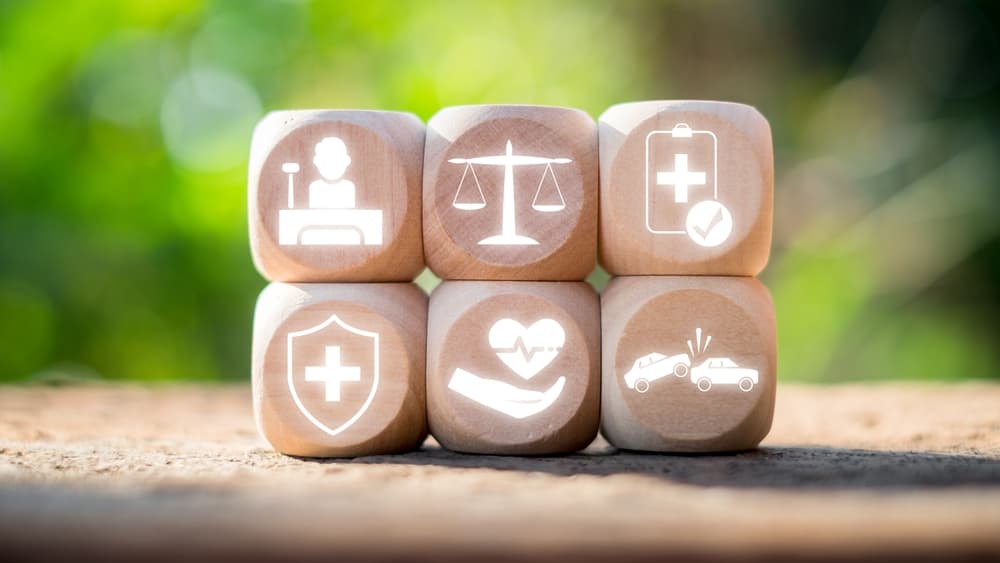Generally, in a personal injury claim, you can sue for “damages.” Damages are the losses from the accident, including your actual financial losses (economic damages) and intangible losses like pain and suffering (non-economic damages). In rare cases, you may be able to recover punitive damages, damages meant to punish the wrongdoer for their particularly egregious behavior.
At Best Law, our Los Angeles personal injury lawyers understand the immense challenges you’re facing. We’re dedicated to helping local residents, from the heart of LA to communities like Inglewood, Hawthorne, Baldwin Hills, Liemert Park, Compton, and throughout San Bernardino and Riverside Counties, understand their rights and the types of compensation they may pursue. We treat our clients like family, offering compassionate and clear legal guidance every step of the way.
Ready to discuss your Los Angeles accident and what damages you may be owed? Your first conversation is free and confidential. Call Best Law today at (424) 260-4649.
Understanding Damages in a California Personal Injury Claim
In California, personal injury victims may seek various types of financial recovery, known as damages. These damages aim to put you back in the position you were in before the accident. Generally, damages fall into two main categories: economic and non-economic. In certain rare situations, punitive damages may also apply.
Economic Damages: Covering Your Tangible Losses
These damages cover direct, measurable financial losses you experience due to your injury. They are often easier to calculate because they come with specific bills or records.
Sometimes referred to as pecuniary or monetary damages, these include:
- Medical Bills: This includes all costs related to your medical treatment, from emergency room visits and hospital stays to physical therapy, prescription medications, and even future medical care that your injury may require.
- Lost Wages and Earning Capacity: If your injuries prevent you from working, you may recover compensation for lost income. This also includes the loss of future earning capacity, which accounts for any long-term impact on your ability to earn a living.
- Property Damage: If the accident damaged your vehicle or other personal property, you can seek funds for repairs or replacement.
- Out-of-Pocket Expenses: Many smaller costs add up, such as transportation to medical appointments, adaptive equipment, or home modifications. These everyday expenses are recoverable.
Non-Economic Damages: Addressing Your Intangible Suffering
Non-economic damages, sometimes called general damages, address the intangible, non-monetary losses that profoundly impact your quality of life after an injury. These are deeply personal and reflect the emotional and physical distress you experience.
Some examples include:
- Pain and Suffering: This refers to the physical discomfort and agony caused by your injuries. It also includes the mental anguish, stress, and inconvenience you endure during your recovery.
- Emotional Distress: Accidents often leave lasting psychological scars. You may experience anxiety, depression, post-traumatic stress disorder (PTSD), or other emotional challenges. California law recognizes the severe impact of these conditions.
- Loss of Enjoyment of Life: If your injuries prevent you from participating in hobbies, activities, or daily routines you once enjoyed, you may receive compensation for this diminished quality of life.
- Loss of Consortium: This type of damage addresses the negative impact your injuries have on your relationships, particularly with a spouse or partner. It accounts for the loss of companionship, intimacy, and support.
Punitive Damages: When Recklessness Causes Harm
Punitive damages are distinct from economic and non-economic damages, and courts rarely award them. Their purpose is not to compensate you for a loss but to punish a wrongdoer for their oppressive, fraudulent, or malicious behavior that caused the injury. These damages also aim to deter others from similar behavior in the future.
For instance, if a property owner was proven to have purposely created a dangerous condition, such as intentionally rigging a loose handrail on a frequently used staircase to cause injury, with extreme disregard for the safety of visitors, punitive damages might be awarded.
How Courts Determine Pain and Suffering Compensation
Calculating pain and suffering damages is not an exact science in California. No strict formula exists. Instead, courts and insurance companies consider several critical factors to determine a fair amount, including the severity of your injuries, the length of recovery, permanent disabilities or disfigurement, and the impact on daily activities and relationships
While there is no “average” figure, two common methods often emerge in discussions, though they are not rigid rules.
- Multiplier Method: The “multiplier method” involves multiplying your total economic damages by a number, typically between 1.5 and 5, depending on injury severity. More severe injuries might warrant a higher multiplier.
- Per Diem Method: The “per diem method” assigns a daily rate for each day you experience pain and suffering from the date of the accident until you reach maximum medical improvement.
These methods are simply tools to help evaluate, not guarantees of, a specific outcome.
Why There’s No “Average” Settlement for Personal Injury Claims

Los Angeles Personal Injury Lawyer, Elissa Best
Many people ask about the “average” settlement for their type of injury claim. The truth is, there is no true average because every personal injury case is unique. Factors influencing a settlement’s value are highly individual. These factors directly influence the negotiation process and potential outcomes.
Among other things, your lawyer needs to evaluate the following to determine what compensation you may be owed:
- Extent of Medical Treatment: The more extensive and costly your medical care, the higher your economic damages.
- Lost Income and Future Earning Potential: Significant lost wages or a reduced ability to earn in the future greatly impact total compensation.
- Strength of Evidence: Strong, compelling evidence proving the other party’s negligence and the extent of your injuries is paramount.
- Insurance Policy Limits: The available insurance coverage of the at-fault party may limit the maximum recovery.
For example, the settlement amount for a minor fender-bender on Crenshaw Boulevard in Baldwin Hills involving only slight injuries may differ significantly from the settlement of a severe truck collision on the 10 Freeway in San Bernardino County resulting in significant, lasting harm.
FAQ for What Can You Sue for in a Personal Injury Case
Can I Sue for Pain and Suffering after a Car Accident?
Yes, you may pursue pain and suffering as non-economic damages in a car accident claim. This includes both physical pain and any emotional distress you experience.
How Much Can You Sue for Personal Injury?
There is no fixed limit on how much you may sue for personal injury. Also, under California law, most types of damages are not capped. However, the value of your claim depends entirely on the specific losses you sustained, the severity of your injuries, and whether the circumstances warrant punitive damages.
What Are Compensatory Damages in a Personal Injury Case?
Compensatory damages are the primary form of recovery in personal injury cases. They cover both your economic losses (like medical bills and lost wages) and non-economic losses (such as pain and suffering). Their goal is to compensate you for your actual losses and make you “whole” again financially after your injury.
Do I Need a Lawyer for a Personal Injury Lawsuit?
While not required, having an experienced personal injury lawyer makes a significant difference. An attorney may navigate the complex legal system, gather essential evidence, skillfully negotiate with aggressive insurance companies, and tirelessly advocate for a fair settlement.
What if the Accident Happened in a Specific Community like Inglewood or Compton?
The types of damages you can sue for remain consistent across California. However, a local attorney familiar with the courts and community dynamics in areas like Inglewood, Hawthorne, or Compton may provide more tailored guidance and resources.
Take Action Today to Protect Your Rights
Suppose you or a loved one suffered injuries due to someone else’s negligence in Los Angeles, San Bernardino County, or Riverside County. In that case, you might be entitled to recover compensation for your losses.
You do not have to navigate this challenging time alone. Call Best Law today at (424) 260-4649 for a free consultation.
Our dedicated team treats every client like family, offering transparent communication and a “No Win, No Fee Guarantee.” We are committed to fighting tirelessly to secure the justice and compensation you deserve.



